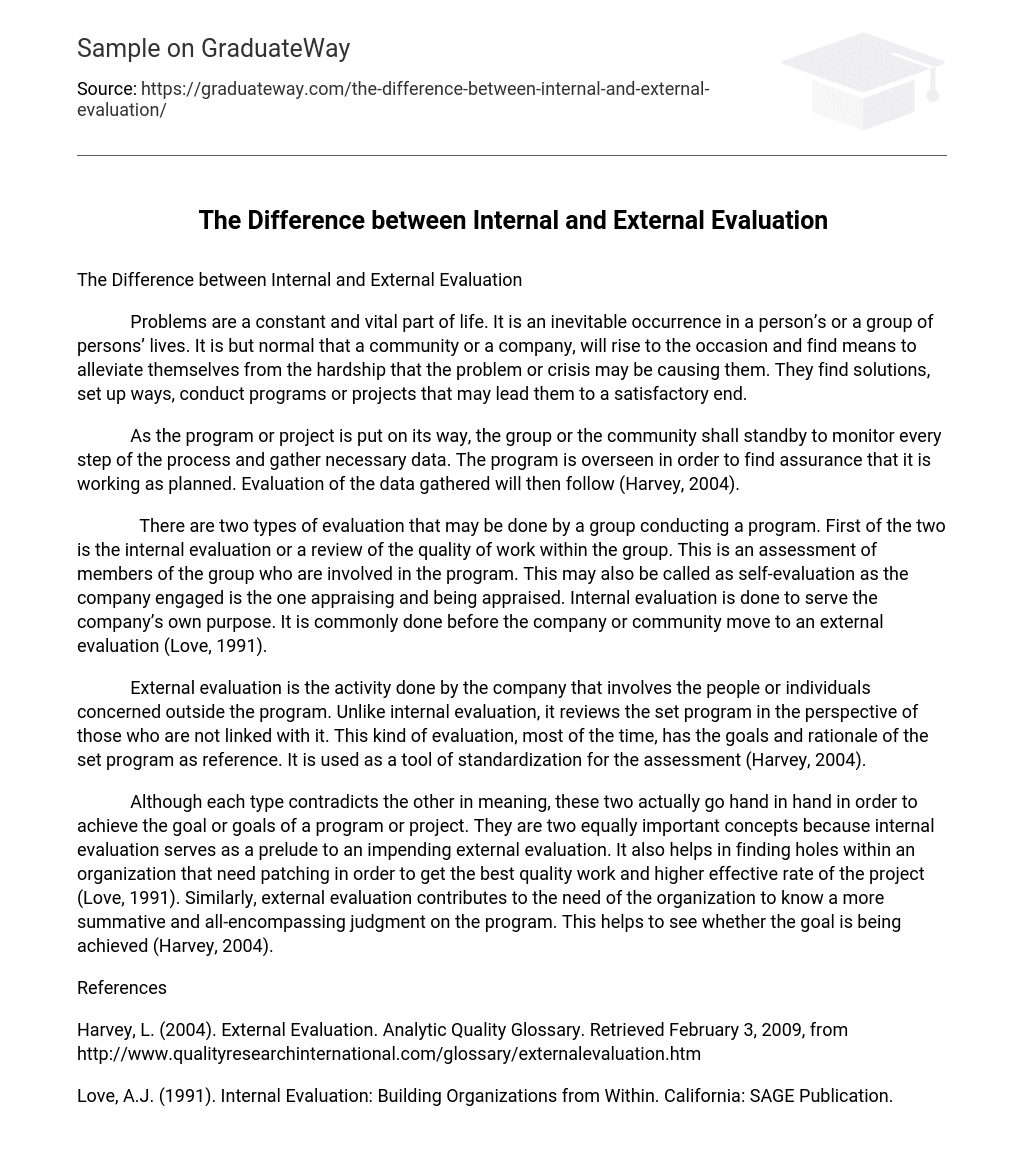The Difference between Internal and External Evaluation
Problems are a constant and vital part of life. It is an inevitable occurrence in a person’s or a group of persons’ lives. It is but normal that a community or a company, will rise to the occasion and find means to alleviate themselves from the hardship that the problem or crisis may be causing them. They find solutions, set up ways, conduct programs or projects that may lead them to a satisfactory end.
As the program or project is put on its way, the group or the community shall standby to monitor every step of the process and gather necessary data. The program is overseen in order to find assurance that it is working as planned. Evaluation of the data gathered will then follow (Harvey, 2004).
There are two types of evaluation that may be done by a group conducting a program. First of the two is the internal evaluation or a review of the quality of work within the group. This is an assessment of members of the group who are involved in the program. This may also be called as self-evaluation as the company engaged is the one appraising and being appraised. Internal evaluation is done to serve the company’s own purpose. It is commonly done before the company or community move to an external evaluation (Love, 1991).
External evaluation is the activity done by the company that involves the people or individuals concerned outside the program. Unlike internal evaluation, it reviews the set program in the perspective of those who are not linked with it. This kind of evaluation, most of the time, has the goals and rationale of the set program as reference. It is used as a tool of standardization for the assessment (Harvey, 2004).
Although each type contradicts the other in meaning, these two actually go hand in hand in order to achieve the goal or goals of a program or project. They are two equally important concepts because internal evaluation serves as a prelude to an impending external evaluation. It also helps in finding holes within an organization that need patching in order to get the best quality work and higher effective rate of the project (Love, 1991). Similarly, external evaluation contributes to the need of the organization to know a more summative and all-encompassing judgment on the program. This helps to see whether the goal is being achieved (Harvey, 2004).
References
Harvey, L. (2004). External Evaluation. Analytic Quality Glossary. Retrieved February 3, 2009, from http://www.qualityresearchinternational.com/glossary/externalevaluation.htm
Love, A.J. (1991). Internal Evaluation: Building Organizations from Within. California: SAGE Publication.





